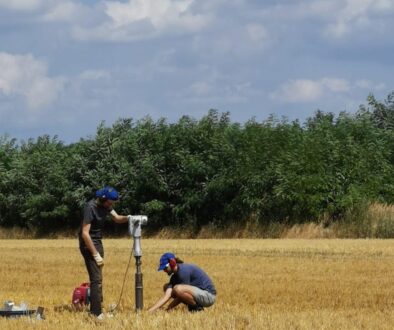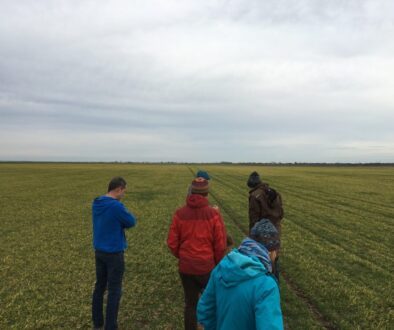LillNAP Case Study – Finland
In June of 2022 we began a pilot project at Lill-Nägels, in Kirkkonummi, to see whether we could bioremediate degraded agricultural soil through a combination of soil health practices. We also are investigating how successional agroforestry principles can decrease the wait for a return on the investment of silvoarable agroforestry patterns. To market the crops and share the story, we have opted to create a community supported agriculture model that will evolve alongside the growing number of crops our pilot field produces. If we can successfully restore the field’s fertility and ecological integrity while moving towards profitability, we believe that underlying concepts of the project will motivate more people to become engaged in agriculture either directly as farmers or through consumer associations with farmers.
The concept truly is a pilot project. The idea was initially conceived as a way for the project manager to continue exploring the application of the most promising and engaging agroecological concepts from his time running a small-scale silvoarable vegetable farm. Intrigued by the idea, the farm owner- Rikard Korkman- engaged friends and colleagues in conversation about how to develop the germ of an idea into a fully fledged project. We have brought together hands-on knowledge of diversified, agroecological market farming along with emerging trends in large scale regenerative farming systems to create something quite new. Since we have decided not to change one or two variables, but to reimagine the system, there are many moving parts.
The system’s landscape pattern is quite simple, but complexity lies within the decision to utilize biodiverse plantings (polycultures) in order to mimic natural ecosystem successional dynamics which, over time, improve site conditions. So although the trees in our system are planted in straight lines, species diversity and spacing are used to create a multi-level, stratified agroforestry system. The species have been divided into two main categories: cash crops and support species.
Cash crops include polycultures of, just for example, rhubarb, pears, currants, and strawberries. Each species occupies a distinct layer of the system and are combined in such a way as to encourage as much photosynthesis as possible. We chose our cash crops in the first degree to support the existing farm production of apples, hence the higher strata of the system focusing on pears and plums. Then we needed to think about other perennial species which have a market and are compatible in space and time with growing fruit trees on mostly semi dwarf rootstocks. In addition, we have decided to cultivate garlic and some bonus annual crops in the system during the establishment phase to round out the successional model.
Supporting those species are shrubs and trees planted mostly from locally gathered seed: elm, maple, ash, and oak being readily available and desirable species. In addition, willow, poplar, and linden are intended to be included from cuttings or as transplants. The inclusion of “non-productive” support species is one of the more radical notions of the project. The inspiration to do this comes from a wide range of different sources: everything from Syntropic Agriculture, the growing interest in functionally diverse cover crops, research looking at the improvement in overall plant growth in biodiverse forestry plots, the growing movement to plant Miyawaki forests, among others. What these all have in common is biomimicry: noticing that ecosystems, which have evolved over tens millions of years, are more productive when there is diversity present. We will cut the woody support species on a regular basis, including killing them, to stimulate below-ground root activity and improve photosynthesis. Managing the regrowth as coppice and pollards will allow them to serve as woody cover crops.
The planting, growing, and tending of the system will be undertaken during the project phase by the project manager. Harvesting is intended as a community event during which CSA members will attend to their portion of the system. The labor savings is key. After a few years of cover cropping, the alleys between the trees will return to production through strip cropping to provide arable yields and access to the trees.
There are many unknowns in our idea, but that is why we have settled on a pilot project. These practices have been combined and put to work in other areas of the world already, to some degree of success, and we want to try here in Finland as well. We do not know what the field will look like in 100 years, but the dynamic nature of adaptive management and the novel territory this idea covers ensures that whatever it is, it will be full of surprises.



